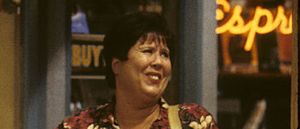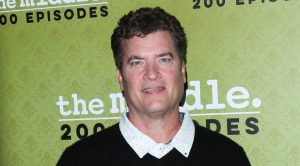Losing a job can be a catastrophic event in anyone’s life, but for most of us, were we to lose our jobs delivering pizza or working in an office, the internet wouldn’t ignite with rumors about if that means Pizza Hut is doomed to go out of business. Sadly, things aren’t quite so easy in Hollywood when a filmmaker departs a project, no matter what the reason.
Last week, movie fans were shocked at the announcement that directors Phil Lord and Chris Miller were leaving the upcoming Star Wars spin-off based on Han Solo, especially with the film only having a few weeks left of shooting. With no additional details surfacing that confirm whether it was Lucasfilm or the directors who made the decision to part ways, rumors began circulating about what could have caused the split, with theories ranging from the directors wanting to make the film a comedy, the filmmaking process allowing too much improvisation, and issues with the lead star creating filmmaking issues.
Videos by PopCulture.com
Another recent example of a lauded filmmaker parting ways from a big Hollywood film was in 2014 when Edgar Wright and Marvel cited “creative differences” for the director’s departure from Ant-Man. With Wright doing press for his latest film, Baby Driver, he has revealed to Variety, “The most diplomatic answer is I wanted to make a Marvel movie but I don’t think they really wanted to make an Edgar Wright movie.”
For as long as there have been movies, there have been filmmakers who have abandoned projects due to the direction the financiers have wanted the production to take, but in this day and age of social media, everyone is quick to point fingers and fuel rumors.
Some films have suffered severely from loss of creative vision, while others have been such strong films that no one knew the original director left the project.
Scroll down to see films whose directors left the project before it was finished!
Gone With the Wind – George Cukor
Considered one of the most successful movies of all time, Gone With the Wind‘s legacy often avoids discussion of directorial disasters.
Adapting the novel into a feature film was easier said than done, with years spent trying to perfect the script and attempts to find the perfect actress to portray Scarlett O’Hara. Three weeks into finally filming, Cukor was let go with rumored reasons being that he clashed with star Clark Gable in addition to the screenwriter.
Victor Fleming stepped in to replace Cukor, but with the film being behind schedule, had to work even harder in hopes of righting the ship, eventually having to also leave the picture due to exhaustion. After Fleming came Sam Wood, but with Fleming having shot the majority of the footage, Fleming ended up with the directorial credit.
The Wizard of Oz – Richard Thorpe
Much like The Wizard of Oz being lauded for its diverse array of characters, there were just as many diverse filmmakers involve with the creation of the Technicolor epic.
Richard Thorpe got to shoot his version of the film for less than two weeks before Buddy Epsen, who originally played the Tin Man, became critically ill due to the makeup that was used to create the chrome character. During this filming delay, a producer took a look at the footage, decided he didn’t like it, and asked for George Cukor’s creative assistance.
When Cukor left to shoot Gone With the Wind (for a little while), Victor Fleming (who completed filming on Gone With the Wind) came in to finish the vision that Cukor had created. Once Fleming eventually passed away, King Vidor revealed that he had shot the film’s opening and closing sequences, in addition to the “Somewhere Over the Rainbow” sequence, but never mentioned anything until after Fleming’s passing out of respect for the director.

Fear and Loathing in Las Vegas – Alex Cox
With films like Repo Man and Sid & Nancy under his belt, the studio hired Alex Cox to give Hunter S. Thompson’s story an interesting interpretation full of a pessimistic outlook towards “normal” people.
Cox somehow managed to annoy star Johnny Depp in addition to Thompson himself, so alienating your film’s star and the person the movie is based on made creating a good film almost impossible. Apparently, Cox had envisioned incorporating animated sequences to help convey some of the more surreal aspects of Thompson’s novel, an idea which Depp was highly opposed to.
“Alex had some dream that he could make Thompson’s work better,” Depp revealed in an interview about the project. “He was wrong. He had this idea about animation in the film.”
Superman II – Richard Donner
With the studio banking on the success of a live-action Superman movie, director Richard Donner was tasked with directing not just one, but two movies based on the superhero.
The director took a break from directing the sequel to begin post-production on the first film, assuming he’d eventually get to finish shooting the sequel. This assumption was wrong, as the studio ended up being unhappy with the sequel, hoping it would be more light-hearted.
Warner Bros. brought in Richard Lester to finish the film, but according to DGA rules, Lester had to have shot 51% of the finished film to get credit, forcing the director to reshoot many scenes and sequences.
The film ended up suffering from the change in creative hands, but with an eventual home video release, a “Richard Donner Cut” was assembled to give audiences some semblance of his original vision.

The Island of Dr. Moreau – Richard Stanley
Hot off the dystopic cyberpunk thriller Hardware, Richard Stanley was gaining a name for himself as an up-and-coming horror director, which made him a great fit for the adaptation of the H.G. Wells novel.
Val Kilmer was cast as the lead character, who had become marooned on an island full of genetically created animal-human hybrids, but the actor was going through a divorce at the time of filming, making him antagonistic of the director while also demanding his role be cut nearly in half. David Thewlis stepped up as the main character, with Kilmer becoming the doctor’s assistant.
The studio grew impatient with Stanley, with weather causing massive delays for the production, ultimately firing him and replacing him with director John Frankenheimer. Filming off the coast of Australia, when Stanley was fired, he opted to take up residence in nearby jungles. Later in the production, members of the crew stumbled across Stanley and, wanting to see the state of things for himself, the former director grabbed a dog mask and infiltrated the set, even managing to sneak his way into a few scenes as an extra.
Pixar Films
Considering how uplifting many of the narratives in Pixar films are, it’s hard to believe that behind the scenes, the directorial visions are much more combative.
Under the mind of Oscar-winning Jan Pivanka, Ratatouille was dreamed up as a much more ethereal and fantastical film, but with it being the first film the studio was making outside of Disney’s guidance, the company panicked at the marketability, bringing in Brad Bird to take over.
Toy Story 2 was only ever intended to be released on video, but when John Lasseter saw some of the early footage, he realized the film’s potential and took over to finish the film. Sadly, Lasseter also realized that the film’s story couldn’t be salvaged and he had to start from scratch.
In the case of Brave, the movie was intended to be the first Pixar film directed by a woman, but a year before the film’s release, Brenda Chapman was replaced, and out with her went the film’s darker tone.

MORE NEWS:








